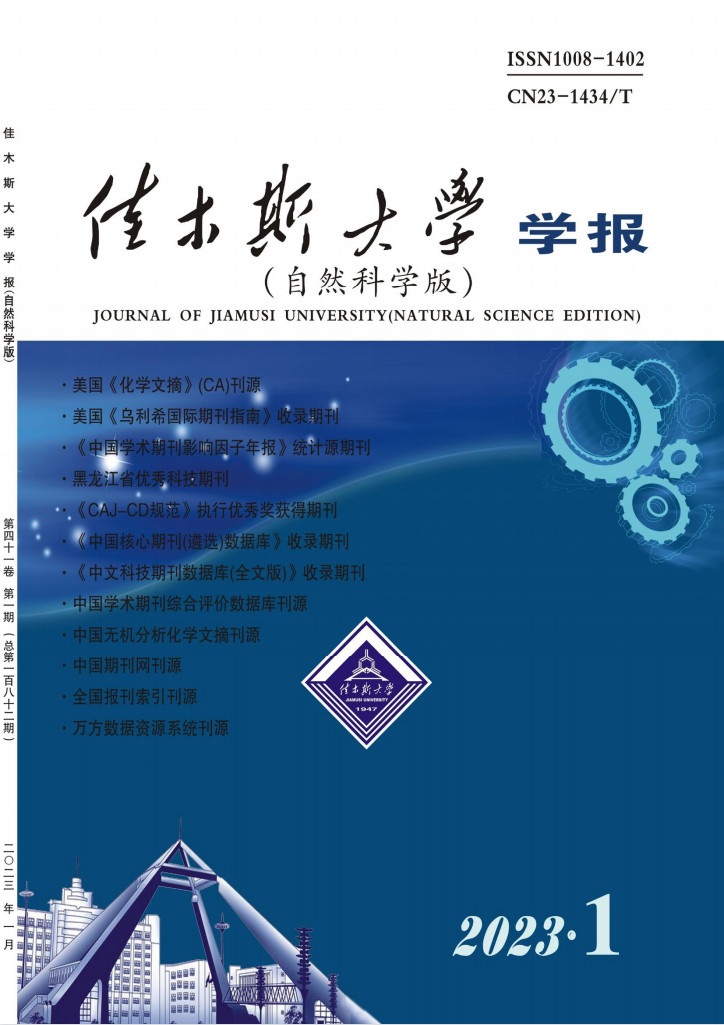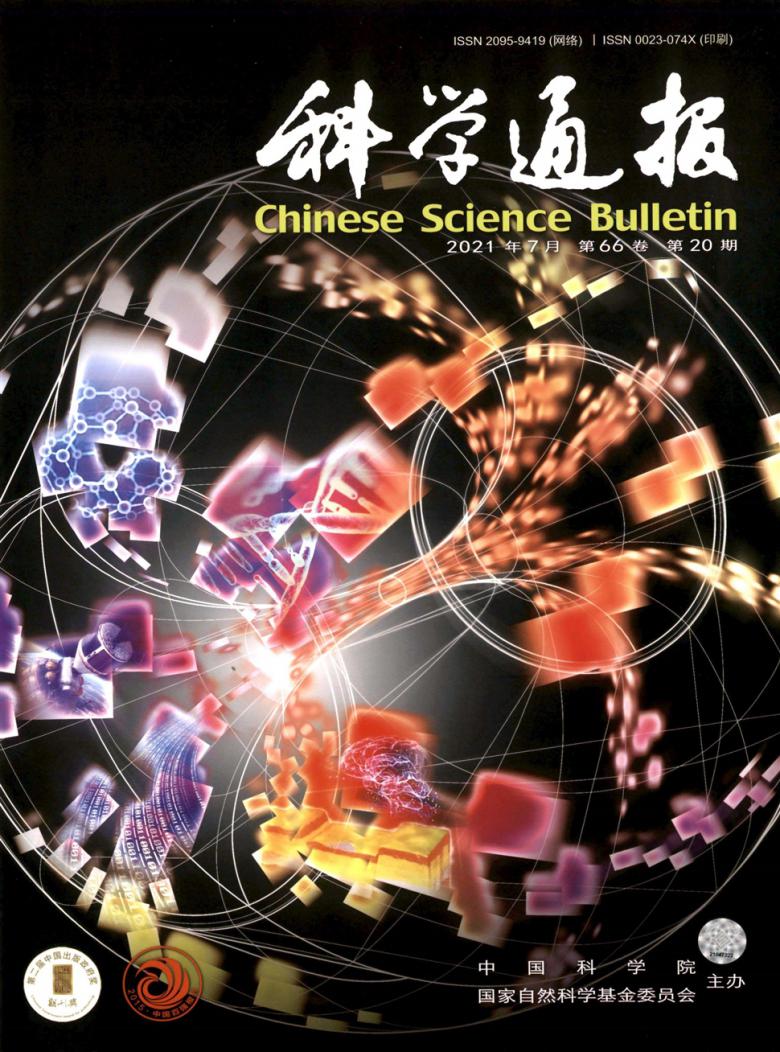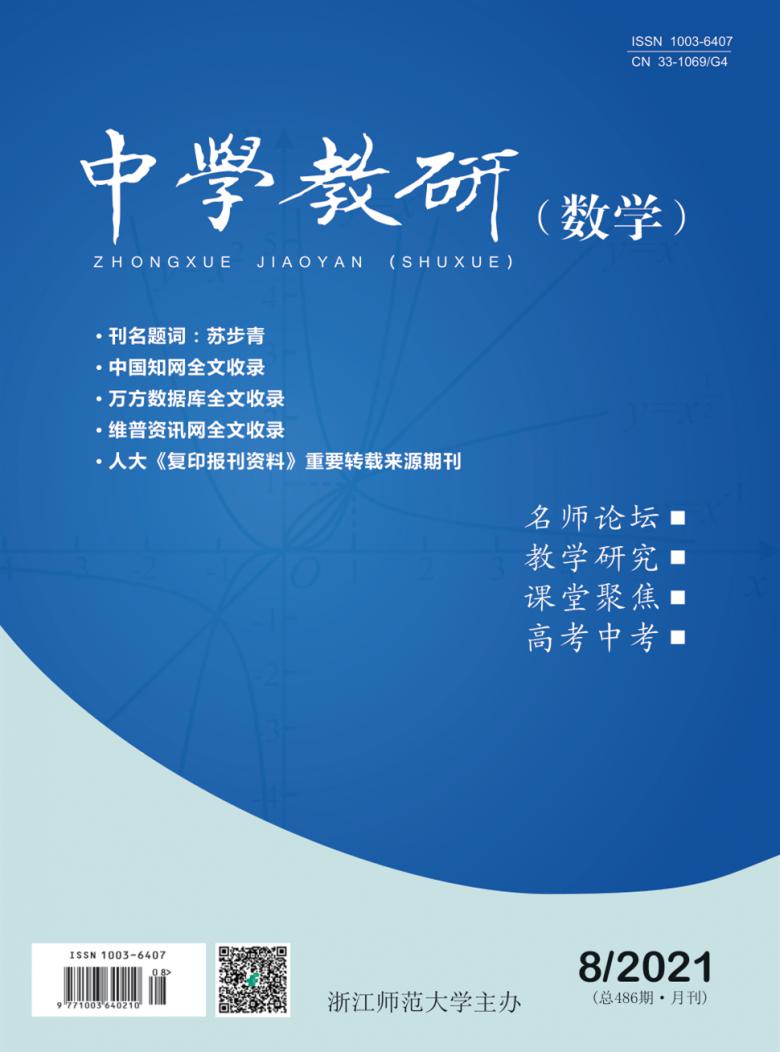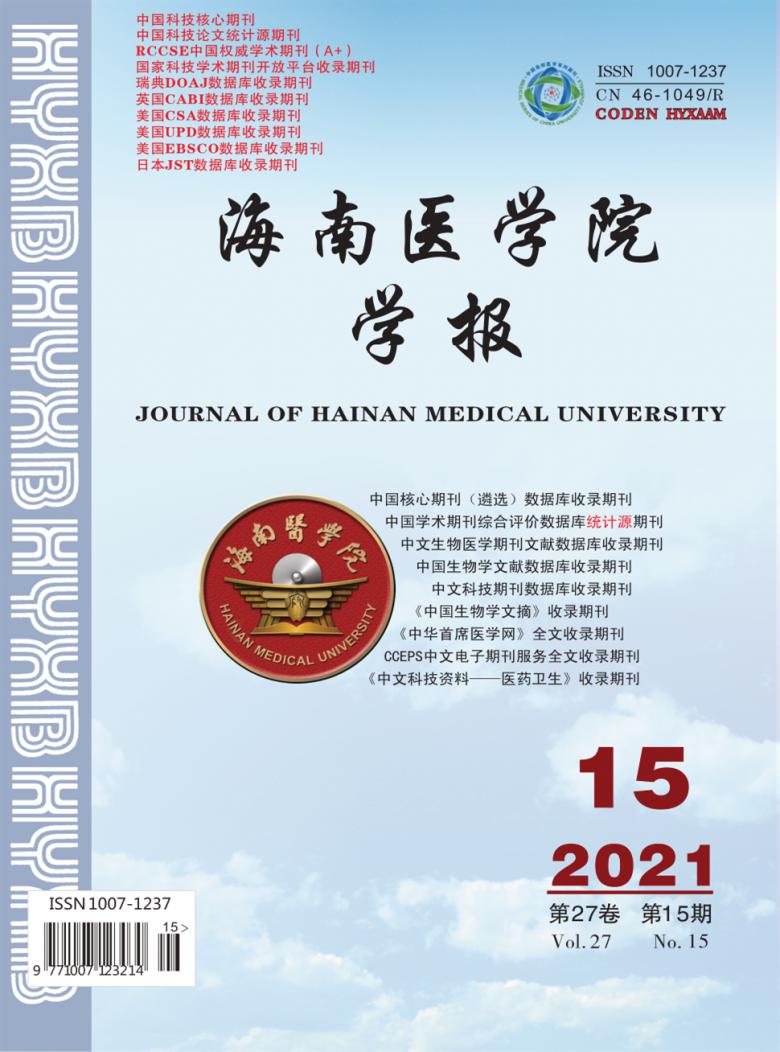系统功能与语篇分析:从及物性,语气和语域分析英语广告
未知 2008-05-26
[Abstract] The advertisement is an indispensable part in the society. So the researches on the English advertisements are becoming more and more useful and important. At the beginning of the thesis, the author holds the definition, the effect and the component of the advertisement. And then the author states something about discourse analysis from its definition, components, and levels. Discourse analysis is the process of description, explanation, illustration, and evaluation. The understanding of the text is the low level, but the high one is evaluating the text. Systemic Functional Grammar (SFG) is proved that it is more suitable for discourse analysis than any other theories. It consists of systemic grammar and functional grammar. Systemic Grammar claims that language is a system network of meaning potential or that it is a semiotic system. Functional Grammar is classified language function into three parts: ideational metafunction, interpersonal metafunction, and textual metafunction. Finally, the author puts these theories into the practice of analyzing the English advertisement. With the discussion and analysis, it is proved that SFG can develop the relationship between them further, and English advertisement can be understood clearly. [Key Words] English advertisement; discourse analysis; systemic functional grammar; functional grammar
[摘要]广告现在已经成为社会生活不可缺少的一部分,对广告语篇分析有其存在的必然性。论文首先论述了广告的定义,影响以及其文案的组成部分。接下来论述了关于语篇分析,从语篇分析的概念,组成部分,以及两个层面。语篇分析是一个描写,解释,说明,评估的过程,对语篇理解了还要会做出评论。而系统功能语法被指出这个语法比其他语言学框架更适合用来分析语篇,所以论文接下来描述了系统功能语法的理论内容去支持语篇分析,系统功能语法包括系统语法和功能语法。系统语法核心思想是认为语言是有个意义潜势的系统网络。功能语法从语言的功能的角度总结出语言的三大元功能:概念功能,人际功能,语篇功能。最后作者用以上的相关理论对一个英语广告实例进行了具体分析。通过以上论述和分析,作者证明了系统功能语法指导语篇分析的可行性。作者也望两者能更加的完善,以至能更系统地分析理解广告语篇。 [关键词] 英语广告; 语篇分析; 系统功能语法; 功能语法
1. Introduction Since the 1960s, Halliday, the Professor of linguistics, develops a systematic and comprehensive theory of language, called “Systemic-Functional Grammar (SFG)”, and publishes his book “An Introduction to Functional Grammar” in 1985 and 1994. Many scholars also published a number of books and papers on systemic grammar. The research of Systemic Functional Grammar begins in 1970s and become popular in the late 1980s. English advertising begins in the medieval times and the advertising-boom appears in the 1920s. Today advertising has become an indispensable tool for modern companies and institutions. So the discourse analysis of English advertising is very necessary. With the analysis, people can understand the advertisement completely and supply the further improvement with some evidence. Now few people have tried to use the theories of the SFG to analyze English advertisements. But Professor Huangguowen makes a detailed study on the combination of the SFG and the analysis of English advertisement in his newly published book “Theory and Practice of Discourse Analysis---A Study in Advertising Discourse (2001)”. The thesis will make a tentative endeavor to apply the theories of the SFG to the analysis of English advertisements, hoping to prove that the theories of SFG can be used to analyze English advertising and are actually effective. 2. Advertising 2.1 The definition of advertising Most of the scholars hold that “Advertising” originates from the Latin word “Adventure” which means arousing people’s interest to take action. In 1300 to 1475, it was changed to the medieval English “Advertise”, which meant, “Someone pays attention to something”. The first newspaper advertisement is said to have appeared in 1704 in the Boston News Letter in America. During the 18th century advertising grew in popularity both in Britain and the American colonies. Before 1890, in the western, the definition of advertising is generally called, as “Advertising is a piece of news about the product or the service.” In 1948, The Committee on Definitions of the American Marketing Association defines: “the non-personal communication of information usually paid for and usually persuasive in nature about products, service or idea by identified sponsors through the various media.” American Sponsors Association hold: Advertising is the paid communication for the masses, and its final purpose is to transmit messages, change the attitude, induce people to take action and benefit identified sponsors. The Encarta Encyclopedia defines “advertising” as “a form of commercial mass communication designed to promote the sale of a product or service, or a message on behalf of an institution, organization, or candidate for political office”.[1] Now, draw the following conclusion: “Advertising is a paid, mass-mediated attempt to persuade”. [2] Firstly, identified sponsors need to pay for it. Secondly, it is delivered through a communication medium designed to reach more than one person. Thirdly, it is the public communication designed to change or reinforce the attitude and the action. 2.2 The effect of advertising Advertising can make a contribution to sales---along with the right product, the right price, and the right distribution. It can not only create social wealth directly and provide lots of jobs, but also promote the development of other industries. And advertising is related to GDP (Gross Domestic Product) in that it can contribute to levels of overall consumer demand when it plays a key role in introducing new products. Advertising can have a stabilizing effect on downturns in business activity. Advertising is alleged to stimulate competition and therefore motivate firms to strive for better products, better production methods, and other competitive advantages that ultimately benefit the economy as a whole.Due to the economies of scale produced by advertising, consumers actually realize less—expensive products. As broad-based demand stimulation results in lower production and administrative costs per unit, low prices are passed on to consumers. The pressure of competition and the desire to have fresh, marketable products stimulate firms to produce improved products and do some innovations. All of these can contribute to the standard of living and quality of life in a society. Advertising educates consumers, equipping them with the information they need to make informed purchase decisions. Consumers become more educated regarding the features, benefits, functions, and value products. Further, consumers can become more aware of their own tendencies toward being persuaded and relying on certain types of product information. According to the above, better-educated consumers enhance their lifestyles and economic power through astute marketplace decision-making. In all, with the development of the technology and the persity of the mass media, advertising has influenced people pervasively in the daily life. Advertising plays an important role in the society. Foreign countries (especially American) have developed the advertising for a long time, so Chinese need to use the experience of other countries for reference. That is the study of English advertising has its necessity. The study of analysis of English advertising is meaningful. 2.3The components of copywriting “Copywriting is the process of expressing the value and benefits; a brand has to offer, via written or verbal descriptions.”[3] A complete piece of copywriting generally consists of headline (including sub-headline), body copy, slogan, and supplementary items. The headline is the most important part, which is the leading sentence used at the top or bottom of the advertising. It should arouse interests and attract attentions. It can make people keep on reading and get to know more about the product being sold. It must be short, simple word about not more than 10 words, but it includes enough information, the name of brand and so on. Subhead is an additional headline usually appears above or below the headline. It includes important brand information not included in the headline. Like the headline it transmits key selling points or brand information quickly. It should reinforce the headline and serves as a transition to the body copy. Body copy tells a more complete story about the product or service, only one out of 10 readers read the body copy, so it will arouse people’s interest and more information for people to know of. Generally it includes emotional copy and reason-why copy. Slogan, its structure is similar to the headline. A slogan is a short phrase used to help establish an image, identity, or position for a brand or an organization. It can provides continuity across different media and between advertising campaigns. It expresses advertising message with brief, repeatable, and memorable statement. That is, it can make consumers take actions. Take some famous slogans for example: “Just do it! (Nike)”, “Fresh up with seven-up (Seven-up)”, “Things go better with Coca-cola (Coca-cola)”. Supplementary items are the complete instructions of advertising content. It includes illustration, trademark, and name of commodity, logo type, address, telephone number, price, accounts number, box and panel, seal and so on. Illustration and trademark are very important in them. Most of people read ad following the order: illustration, headline, and body copy. So illustration is the most important part for a successful ad. Illustration arouses interest to read the headline, identify the subject of the ad, clarify claims made by the copy, and create a farmable impression of the information. Trademark includes brand name, corporate or store name and visual symbol. It maybe use in shortening. A well-known brand name is worthy and therefore is of great importance to a corporation. The features of the trademark are describable and remarkable,such as “Ford”, “Adidas”.
3. Discourse analysis In 1952, Zellings.Harriss, the structuralists, reported the article “Discourse Analysis” in the magazine “Language”. In the last 50 years, a lot of scholars make some efforts to this subject and gain some achievements. From the document, discourse analysis involves linguistics, semiotics, psychology, anthropology, sociology, literature, information science and so on, and gradually forms the knowledge studying language-in-use in the communication. “Discourse analysis is the study of how sentences in spoken and written language form larger meaningful units such paragraphs, conversations, interview, etc. For example, discourse analysis deals with (a) how the choice of articles, pronouns, and tenses affects the structure of the discourse. (b) The relationship between utterances in a discourse. (c) The moves made by speakers to introduce a new topic, change the topic, or assert a higher role relationship to the other participants.”[4] “Discourse analysis emphasizes that language is not merely a self-contained system of symbols but more importantly a mode of doing, being, and becoming. Discourse analysis seeks to describe and explain linguistic phenomena in terms of the affective, cognitive, situational, and cultural contexts of their use and to identify linguistic resources through which we (re) construct our life (our identity, belief, ideology, and so forth). Essentially, it asks why we use language the way we do and how we live lives linguistically. Discourse analysis insists on the use of naturally occurring language date (as opposed to invented data)”. [5] Generally speaking, discourse analysis is a developing and non-qualitative subject, which has neither the guidance of a specific theory nor generally recognized analysis ways and steps. Schiffirn, American discourse analyst, introduces six methods using in the discourse analysis: speech act theory, international sociologist, and the ethnography of communication, pragmatics, conversation analysis, and variation analysis. M.A.K.Halliday in his book “An introduction to Functional Grammar”holds that “The aim (of SFG) has been to construct a grammar for purposes of text analysis: one that would make it possible to say sensible and useful things about any text, spoken or written, in modern English.”[6] 3.1 Purpose of discourse analysis SFG construct a grammar for purposes of text analysis, so most of scholars insist that it is more suitable for discourse analysis than any other theories. That is SFG is the approach proposed in the study of discourse analysis. The discourse analysis guiding by SFG is called as “Functional discourse analysis”. Some analysts think discourse analysis is the interpretive activity, because its purpose is to help the readers understand the meaning of the text and the writer. But functional discourse analysis is the explanatory activity; its purpose is to explain why the text expresses the meaning. Halliday and Hasan hold that the purpose of the text analysis is explanation not interpretation. For a text, the purpose of “interpretation” is to understand what the meaning of the text is, but the purpose of “explanation” is to make clear that how the text expresses its meaning. According to the author’s understanding, the explanatory activity includes interpretive activity, because before explaining how a text expresses its meaning, people will know what the meaning of a text is. The purpose of functional discourse analysis is to evaluate the text. Before evaluating a text, discourse analysis must study the text from “What is the meaning of the text?” “How does the text express the meaning?” “Why does the text express the meaning?” In all, the purpose of discourse analysis is explanatory activity to evaluate the text. 3.2 Scopes of discourse analysis Halliday holds that discourse analysis consists of context of culture, context of situation, language. (I) Context of culture: language is the social phenomenon and the reflection of the social activity. Every text is produced and then affected in a particular context of culture. “Context of culture” refers to the text expressing all the meanings in the special society and culture (including purpose of communication, way of communication, form of communication, content of communication, etc). Context of culture is reflected by “genre”. Genre consists of schematic structure and realizational pattern. (II) Context of situation: it is immediate environment of language activity, which is time, place, talking content, the relation among people related to transfer communicational meanings. Halliday and Hasan (1985) pide context of situation into three parts: field, tenor and mode. (a) Field refers to what is being talk about, what is it that the participants are engaged in, in which the language figures as some essential components. (b) Tenor refers to the people involved in the communication and the relationship between them. What kinds of role relationships obtain among the participants, including permanent and temporary relationships of one kind or another, both the types of speech role that they are taking on in the dialogue and the whole cluster of socially significant relationships in which they refer to. (c) Mode refers to how the language is functioning in the interaction, e.g. whether it is written or spoken. (III) Language includes semantics, lexico-grammar, and phonology/graphology. According to the view of Halliday, language chiefly expresses three functions/meanings: Ideational function, Interpersonal function and Textual function. The three functions are related to context and lexico-grammar. Field determines the experiential meanings that expressed. Tenor determines the interpersonal meanings. Mode determines the textual meanings. And these three functions are embodied by lexico-grammar. “However, but, nevertheless” express textual meanings. Schematic structure Context of culture Realizational structure Field Text Context of situation Tenor Mode Semantics LanguageLexico-grammar Phonology/graphology 3.3Levels of discourse analysis In “An Introduction to Functional Grammar”, Halliday holds “In any piece of discourse analysis, there are always two possible levels of achievement to aim at. One is a contribution to the understanding of the text: the linguistic analysis enables one to show how and why, the text means what it does. In the process, there are likely to be revealed multiple meanings, alternatives, ambiguities, metaphors and so on.”[7] That is, the low lever is the activity of describing and explaining the text. “It is one that should always be attainable provided features of the language---provided it is based on a grammar, in other words.” Another level is the evaluation of the text: “the linguistic analysis may enable one to say why the text is, or is not, an effective text for its own purposed---in what respects it succeeds and in what respects it fails, or is less successful.”[8] That is, the high level is the activity of interpreting and evaluating the text. In order to attain the goal, it requires analyzing the text, and analyzing the context (context of situation, context of culture) and the relationship between context and text. So the analysts need to decode the further meaning of the text and evaluate the use of words and grammars in context of situation and the context of culture. According to huangguowen, SFG is more suitable for analyzing the text. It is because SFG is the text grammar. It is because grammar is to describe how the use of language, that is, the way to say and understand the meaning of the text clearly. It is because SFG describe the systemic network of the three metafunction clearly. It does because applying the framework of SFG to analyze the text can avoid evaluating at will. The following is the description of SFG, and why it can guide discourse analysis. 4. Systemic functional grammar In Halliday’s book “An Introduction to Functional Grammar”, he says” the theory on which this description is based, systemic theory follows in the European functional tradition. It is largely based on Firth’s system-structure theory, but derives more abstract principles from Hjelmslev and owes many ideas to Prague School. The organizing concept is that of the “system”, which is used essentially in Firth’s sense of a functional Paradigm but developed into the formal construct of a ‘system network’.”[9] SFG has two components: systemic grammar and functional grammar. In Huzhuanglin’s book “Linguistics. A course Book”, he holds that “Systemic grammar aims to explain the internal relations in language as a system network, or meaning potential. And this network consists of subsystem from which language users make choices. Functional grammar aims to reveal that language is a mean of social interaction, based on the position that language system and the forms that make it up are inescapably determined by the uses or functions which they serve.”[10] 4.1 Systemic grammar “Systemic grammar is an approach to grammatical analysis which is based on a series of systems. Each system is a set of options of which one must be chosen at each relevant point in the production of an utterance. For example, in English, the speaker or writer makes choices among the systems of number.”[11] The central component of a systemic grammar is a chart of the full set of choices available in constructing a sentence, with a specification of the relationships between choices. Halliday’s systemic grammar has the following aspects: First, it has “system” as its central category. Second, it lays stress on relating the sociology. Third, it attaches importance to describe the characteristics of particular languages and particular varieties of languages. Fourth, language is a mode of action and not an instrument of reflection. Fifth, it uses clines to explain some language problems. According to Huzhuanglin’s instruction “ In systemic grammar, the notion of system is made of a central explanatory principle, the whole of language being conceived as a ‘system of systems’, systemic grammar is concerned with establishing a network of systems of relationships, which accounts for all the semantically relevant choices in the language as a whole.”[12] A system is a list of choices; the choices in a system are mutually exclusive. Every system is finite. The meaning of every choice in a system depends on the meaning of other choice in the system. In all, systemic grammar makes people know “system” and “structure”. It requires people to analyze the text logically and regard the text as a unit. In the description of the system, if the feature of the system appears in other system, that can be simultaneity or echelon. If the two systems appear in order, the features of them are ordinal. The systemic grammar is selecting a general area of meaning, and gradually breaking it into smaller and smaller sub-areas. Choice is meaning. System gammar describes three Metafunctions. Each of the metafunctions is a complex system consisted of other systems, and choices are simultaneously done in the three metafunctions. This is the close relationship between systemic grammar and functional grammar. 4.2 Functional gammar “In a functional grammar, on the other hand, the direction is reversed. A language is interpreted as a System of meanings can be realized.” [13] “Functional Grammar aims to reveal that language is a mean of social interaction, based on the position that language system and the forms that make it up are inescapably determined by the uses or functions which they serve.”[14] The functions of language are the most important things in Functional Grammar. As the tool of people’s communication, language undertakes all kind of functions. Halliday pides the function of language into three kinds: ideational metafunction, interpersonal metafunction, and textual metafunction. 4.2.1 Ideational Metafunction “…A fundamental property of language is that it enables human beings to build a mental picture of reality, to make sense of their experience of what goes on around them and inside them.” [15] It is to convey new information, to communicate a content that is unknown to the listener. The ideational metafunction is to organize the speaker or writer’s experience of the real or imaginary world and includes experiential function and logical function. What experiential function is that language expresses people’s experiences in external world (things, events qualities, etc) and internal world (thoughts, beliefs, feelings, etc). What logical function refers to that language expresses the logical relationship between two or more than two meaning units. (I). Experiential Function Experiential function is chiefly embodied by transitivity and voice. “… Parallel with its evolution in the function of mood, expressing the active, interpersonal aspect of meaning, the clause evolved simultaneously in another grammatical function expressing the reflective, experiential aspect of meaning. This later is the system of transitivity. Transitivity specifies the different types of process that are recognized in the language, and the structures by which they are expressed.”[16] Transitivity is a semantic system. Its purpose is to pide something around people into several processes involving participant and circumstantial element. Halliday holds that transitivity includes six processes: (a) Material process. (b) Mental process. (c) Relational process. (d) Behavioral process. (e) Verbal process. (f) Existential process. (a) Material Process: process of doing Material process is a process of doing. The process usually consists of verb, actor (logical subject) and goal (noun or pronoun) He killed all the people Actor Process goal
(b) Mental Process: process of thinking Mental process is a process of thinking involving perception (see, look), reaction (like,fear) and cognition (knowing, believing, and understanding) and so on. Metal process has two participants: sensor, and phenomenon. Sensor refers to the person who perceives and phenomenon is the something that is perceived by the sensor. Phenomenon includes concrete person or objects, abstract things, happened events and so on. I Hear Him playing the piano next to the door. Sensor Process Phenomenon
(c) Relational Process: process of being Relational process is a process of being. It has two types’ attributive process and identifying process. Relational process consists of intensive, circumstantial and possessive. In the attributive process, the participants are attribute and carrier. The clock Has Three pointers. Carrier Process Attribute
In the identifying process, the participants are identified and identifier. This car Is Mine. Identified Process Identifier
(d) Behavioral Process: process of behaving Behavioral process is a process of behaving, such as breathe, dream, smile, laugh, cry, and cough. The basic components of the process are “behaver” and “process”. This point is similar to the mental process, but different from the material process. She Cried Loudly. Behaver Process Circumstantial
(e) Verbal Process: process of saying Verbal process is a process of saying. “Saying” has to be interpreted in a rather broad sense; it covers any kind of symbolic exchange of meaning. The verbal words are “tell, say, talk, describe, boast, praise”. The verbalization itself is called the verbiage. The teacher Telled The student “Don’t disturb others.” Sayer Process Receiver Verbiage
(f) Existential Process: process of existing Existential process is a process of existing. In every existential process, it must have an “Existent”. “There” has no representational function. There Is An apple On the tree. Process Existent Circumstance
Generally speaking, most of the processes representing descriptive meaning are the relational, existential process and the mental processes. However, most of the processes representing narrative meaning are material processes. “Voice is the ways in which a language expresses the relationship between a verb and the noun phrases which are associated with it. Two sentences can differ in voice and yet have the same basic meaning. However, there may be a change in emphasis and one type of sentence may be more appropriate.”[17] It is represented commonly by active voice and passive voice.In order to make the structure of the text reasonable and the context consistent, speakers need to do an appropriate choice to the voice.
II. Logical Function Logical function mainly refers to the language function, which represents the co-ordinate or subordinate logical relations of language. Halliday researches the function from interdependency and logical-semantic relation. Using the two functions simultaneously to research the language, the language can be analyzed completely. 4.2.2 Interpersonal Metafunction Interpersonal metafunction serves to make full use of language to express the relationship between the society and the person. With the use of language, people communicate with others, establish and keep interpersonal relationships, affect people’s behaviors and express the view about the world. Interpersonal metafunction is realized by mood and modality. (I.) Mood According to Huzhuanglin, “Mood shows what role the speaker selects in the speech situation and what role he assigns to the addressee.”[18] Mood includes the” subject” and the “Finite” element. The function of the “Finite” element is to provide the reference with the proposition. The “subject” is the element of effective and successful propositions. (II). Modality Modality specifies if the speaker is expressing his judgment or making a prediction. Halliday classified modality into two major types: modalization (probability, usuality) and modulation (obligation/inclination). For example: (1) Mary will come back tomorrow. (2) He usually goes to the park. 4.2.3 Textual Metafunction “Textual metafuncton is concerned with the creation of text---the resources for presenting information as text in context.” [19] “The textual function fulfils the requirement that the language can be related in real use, having certain structures in a real context that distinguishes a single item from a grammar or a dictionary in a living passage.”[20] It includes thematic structure, information structure and cohesion. (I). Thematic structure “Thematic structure relates to the structuring of the clause itself---the order in which elements appear in the clause.” [21] The theme is the element which serves as the point of departure of the message; it is that with which the clause is concerned. And the rest of the clause is called rheme. Following Geoff Thompson assumes that theme has four main functions: (a) Signaling the maintenance or procession of “what the text is about” at that point. (b) Specifying or changing the framework for the interpretation of the following clause. (c) Signaling the boundaries of section in the text. (d) Signaling what the speaker thinks is a viable/useful/important starting-point. [22] According to the syntactic structure of the initial constituents of a sentence, Halliday pides theme into three main kinds: simple theme, multiple theme and clausal theme. In a clause, theme is conflated with subject is called unmarked theme. A theme that is something other than the subject is called marked theme. (II) Information structure Information structure is to organize language organization as information unit. It is formed the structure of information unit from the interaction of given information and new information. A clause as an information structure consists of a given element accompanied by a new element. The “unmarked” sequencing of information structure is given-new. Information structure is chiefly embodied by “intonation”. (III) Cohesion In Halliday’s words “The concept of cohesion is a semantic one; it refers to relations of meaning that exist with the text, and that define it as a text.”[23] There is five ways by which cohesion is created in English: reference, ellipsis, substitution, conjunction and lexical organization. (a)Reference: A participant or circumstantial element introduced at one place in the text can be taking as a reference point for another. (b) Ellipsis: Some elements can be omitted in the text. It can avoid repeating and highlight the new information. It is a grammatical way to make the text well knit. (c)Substitution: It means replacing. So the superseded words are the form and its semantic meaning will be found in the replaced elements. (d) Conjunction: It is to use conducted elements to embody all kinds of logical relations in the text. The conducted elements generally are some transitional words, showing logic relations such as time, cause and effect, condition. (e)Lexical organization: It includes repetition, synonymy/antonym, hyponymy/metonymy and collocation. 5. Analysis of the English advertisement Discourse analysis is paid more and more attention to the linguists. The aim of SFG is to construct a grammar for purposes of text analysis. Functional grammar can analyze not only spoken English but also written English.Hoping it is proved that discourse analysis can only be guided by the theory in terms of analyzing some English advertisements, and the functional grammar is of usefulness and serviceability. The following is the insurance advertisement. Insured by Allianz (1) Wouldn’t it be nice to grow old with a few more laugh lines? (2) it’s easy if you have proper protection and a long term savings plan with the right company. (3) Established over100 years ago, The Allianz Group is trusted by over 60 million customers worldwide. (4) For personal insurance solutions covering the different stages in your life, backed by the finanicial security of a global leader, turn to Allianz in Asia. (5) Because wherever life takes you, we provide peace of mind along the way. Allianz. The Power on Your Side. (Newsweek, Oct 2002) 5.1Analyzing the transitivity of the advertising Sentence Process type Process Participant Circumstance 1 relational Wouldn’t be it To grow old with a few more laugh lines 2 relational is it If you have proper protection and a long term savings plan with the right company relational have You, proper protection and a long term savings plan With the right company 3 material Is trusted The Allianz Group 60million customers Established over 100 years ago material established (the Allianz Groups) Over 100years ago (non-finite) 4 material Turn to Allianz in Asia For personal insurance solutions covering the different stages in your life, backed by the financial security of a global leader material covering Personal insurance, different stages in your life (non-finite) material backed (Personal insurance)financial security of a global leader (non-finite) 5 material provide We, peace of mind Along the way, because wherever life takes you material takes Life, you In this advertisement, there are altogether ten processes, among which there are three relational processes and seven material processes. According to what the author has said just now, the three relational processes must have served description. That is these three processes first confirm, “it would be nice to grow old with a few more laugh lines.” then they continue to describe how you can do. The three processes are included in sentence (1) and (2) of the advertisement. The following sentences include seven material processes. Thus, these sentences must serve to narrate. Generally speaking, most of the processes representing descriptive meaning are the relational, existential process and the mental processes. However, most of the processes representing narrative meaning are material processes. Analyzing the processes one by one, this purpose of the copywriter is clearly represented. In sentence (4), the copywriter asks readers to turn to the Allianz in Asia if they want personal insurance solutions covering the different stages in life. Also, the copywriter states the fact that a global leader of financial security backs the Allianz. From all these statements about the power and credit of the Allianz Group, readers just cannot escape the temptation. In addition, the material processes take up nearly 3/5 of the processes. Thus the copywriter puts his emphasis on stating the qualities of the Allianz Group. The process pattern of this advertisement is relational processes (sentence (1), (2)) ---material processes (sentence (3), (4), (5)). 5.2 Analyzing the mood of the advertising Sentence Subject Finite Mood 1 It Wouldn’t be Interrogative 2 It is Declarative You have Declarative 3 The Allianz Group is Declarative 4 (you) turn Imperative 5 We provide Declarative Life takes Declarative
All together this advertisement is made up of five sentences. From the table the moods of different clauses are clearly represented. There is one interrogative sentence that is sentence (1) and one imperative sentence that is sentence (4) Most of the mood types are declarative mood. Copywriters do the advertisement to give the customer more and more information about the product. What is the difference of interrogative and imperative moods? Although sentence (1) is an interrogative sentence, it is in fact not a question to ask for answer but to express a good will since the answer is self-evident. That is “ It would be nice to grow old with a few more laugh line.” The copywriter uses two statements to indicate how they can fulfill this will. Sentence (4) is an imperative sentence expresses some requirements, which serves to ask the readers to buy the service. The ultimate aim of the copywriter is arousing the reader’s attention and takes action. Sentence (5) is in fact not a complete sentence in traditional grammar. It is actually a subordinate clause why readers should choose the insurance provided by the company. The copywriter uses this clause independently just to put it in an emphatic place. Finally readers may be persuaded to buy. The company’ goal is to sell their product or service and benefit for further productions. The mood pattern of this advertising is represented: interrogative, declarative, imperative. 5.3Analyzing the register of the advertising This advertisement is a consumer advertisement to all the people who want to take insurance in the newspaper. Relate the detail to the functional grammar as follows: Field Consumer advertisement Tenor All the people who want to take insurance Mode Magazine advertisement
The field refers to what is happening, that is, simply say, “place”. In English advertisement, according to the different topics or field of it, there are different fields of discourse. There are lots of target areas in the advertisement, such as consumer advertising to consumers, industrial advertising to the company, service advertising. And most of the film, radio, newspapers and magazine advertising are consumer advertising. So the field of this advertising is consumer advertisement. The definition of “tenor” is stated by Geoffrey Richard Thompson, the English linguist, “the people involved in the communication and the relationship between them.” [12] P8 The purpose of advertising is transmitting the information to the readers. That is the copywriters need to know consumers’ thoughts and what they want to know. The copywriters try to persuade them to accept the products. The tenor in English advertising refers to different target consumers, such as children and adults. So the tenor of this advertising is to all the people who want to take insurance. The mode refers to what part the language is playing, the symbolic organization of the text and its function and so on. The classification by media can be embodied by the influence of the mode in the advertisement. According to the different media, the advertisement can be classified into newspaper advertisement, magazine advertisement, television advertisement, radio advertisement, and outdoor advertisement. The text of newspaper and magazine advertisement is written English, because the form of receiving information is reading. And the biggest feature of television and radio advertisement is combining with sight, sound and motion. So the feature of the advertisement is using simple and clear dialogues or monologues, and relating to the lovely picture closely. Outdoors advertisement includes billboard or painted display, poster and spectacular neon sign and so on, so they generally use the slogan to make the product unforgotten. So the mode of this advertising is magazine or newspaper advertisement. 6. Conclusion Copywriting in the advertisement is one type of discourse and belongs to the system of genre. Context requires the advertisement should be attractive, pleasant and persuasive. So the using of positive, pleasing words is one important feature of advertisements. The ultimate purpose of advertising is to ask the consumers to buy the products advertised. Advertising tends to adopt beautiful and special printing style to catch the audience’s eye. In this thesis, by the author’s introduction, discourse analysis can be understand clearly and consist of field, tenor, mode. SFG. consists of systemic grammar and functional grammar. Systemic grammar chiefly refers to “system” and “structure”. Functional grammar claims that language is a system of meaning. It includes three metafunctions---experiential, interpersonal, textual metafunctions. It offers certain tangible concepts for the metafunctions: the concepts of transitivity, mood, modality, thematic structure and cohesive devices. The theories of the SFG especially functional grammar are adopted to analyze advertising. Transitivity classifies linguistic into six processes. In the thesis, the author states them one by one. Mood offers opportunities to learn speakers’ attitudes and tone. This is important in analyzing advertising discourse since advertising is just the communication between advertisers and customers. Field, tenor, mode offer what kind of the advertisement, who is the target people. Different people have different interests. That is, if copywriter knows something about the consumer, he can do better copywriting to arouse people’s interest and take action. So, it is proved that SFG is an important way to analyze the advertising. We hope it can be used in other ways and make something clear. Bibliography [1] 侯晓华.系统功能语法指导下的英语广告语篇分析[D].中国知网(http://www.cnki.net).华中师范大学.2002P4 [2]Tomas C.O’Guinn, Chris T Allen, Richard J.Semenik. Advertising[M]. Cincinnati:South-Western College Publishing.2000P6 [3] 同[2]P358 [4] Jack C.Richards, John Platt and Heidi Platt. Longman Dictionary of Language Teaching & Applied Linguistds[M]. . Foreign Language Teaching and Research Press.2000P139 [5] 同[4]P429 [6] Halliday,M.K.A. An Introduction to Functional Grammar(Second Edition)[M]. Foreign Language Teaching and Research Press.2000P41 [7] 同[6]P45 [8] 同[6]P41 [9] 同[6]P52 [10] 胡壮麟.语言学教程(修订版)[M].北京:北京大学出版社.2001P409 [11] 同[4]P465 [12] 同[10]P410 [13] Halliday,M.A.K.An Introduction to Functional Grammar[M].London: Edward Arnold.1985Pxiv [14] 同[10]P409 [15] 同[13]P10 [16] 同[13]P101 [17] 同[4]P504 [18] 同[10]P418 [19] 刘晶.系统功能语法指导下的新闻语篇分析[D].中国知网(http://www.cnki.net).黑龙江大学.2005P17 [20] 同[10]P420 [21] 赵亚军.英语语篇中的主位组织——系统功能语篇分析法[D].中国知网(http://www.cnki.net).西北工业大学.2004P2 [22] Thompson,Greoff.Introducing Functional Grammar[M].London:Edward Arnold.1996P141-142 [23] Halliday,M.A.K. and Hasan,Ruqaiya. Cohesion in English[M].London:Longman.1976P4 s to the system of genre. Context requires the advertisement should be attractive, pleasant and persuasive. So the using of positive, pleasing words is one important feature of advertisements. The ultimate purpose of advertising is to ask the consumers to buy the products advertised. Advertising tends to adopt beautiful and special printing style to catch the audience’s eye. In this thesis, by the author’s introduction, discourse analysis can be understand clearly and consist of field, tenor, mode. SFG. consists of systemic grammar and functional grammar. Systemic grammar chiefly refers to “system” and “structure”. Functional grammar claims that language is a system of meaning. It includes three metafunctions---experiential, interpersonal, textual metafunctions. It offers certain tangible concepts for the metafunctions: the concepts of transitivity, mood, modality, thematic structure and cohesive devices. The theories of the SFG especially functional grammar are adopted to analyze advertising. Transitivity classifies linguistic into six processes. In the thesis, the author states them one by one. Mood offers opportunities to learn speakers’ attitudes and tone. This is important in analyzing advertising discourse since advertising is just the communication between advertisers and customers. Field, tenor, mode offer what kind of the advertisement, who is the target people. Different people have different interests. That is, if copywriter knows something about the consumer, he can do better copywriting to arouse people’s interest and take action. So, it is proved that SFG is an important way to analyze the advertising. We hope it can be used in other ways and make something clear. Bibliography [1] 侯晓华.系统功能语法指导下的英语广告语篇分析[D].中国知网(http://www.cnki.net).华中师范大学.2002P4 [2]Tomas C.O’Guinn, Chris T Allen, Richard J.Semenik. Advertising[M]. Cincinnati:South-Western College Publishing.2000P6 [3] 同[2]P358 [4] Jack C.Richards, John Platt and Heidi Platt. Longman Dictionary of Language Teaching & Applied Linguistds[M]. . Foreign Language Teaching and Research Press.2000P139 [5] 同[4]P429 [6] Halliday,M.K.A. An Introduction to Functional Grammar(Second Edition)[M]. Foreign Language Teaching and Research Press.2000P41 [7] 同[6]P45 [8] 同[6]P41 [9] 同[6]P52 [10] 胡壮麟.语言学教程(修订版)[M].北京:北京大学出版社.2001P409 [11] 同[4]P465 [12] 同[10]P410 [13] Halliday,M.A.K.An Introduction to Functional Grammar[M].London: Edward Arnold.1985Pxiv [14] 同[10]P409 [15] 同[13]P10 [16] 同[13]P101 [17] 同[4]P504 [18] 同[10]P418 [19] 刘晶.系统功能语法指导下的新闻语篇分析[D].中国知网(http://www.cnki.net).黑龙江大学.2005P17 [20] 同[10]P420 [21] 赵亚军.英语语篇中的主位组织——系统功能语篇分析法[D].中国知网(http://www.cnki.net).西北工业大学.2004P2 [22] Thompson,Greoff.Introducing Functional Grammar[M].London:Edward Arnold.1996P141-142 [23] Halliday,M.A.K. and Hasan,Ruqaiya. Cohesion in English[M].London:Longman.1976P4






